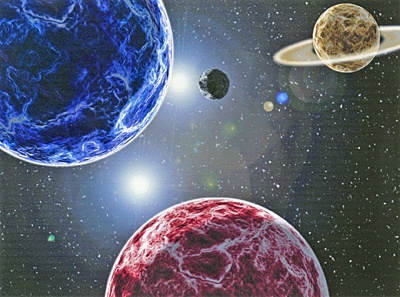All Nonfiction
- Bullying
- Books
- Academic
- Author Interviews
- Celebrity interviews
- College Articles
- College Essays
- Educator of the Year
- Heroes
- Interviews
- Memoir
- Personal Experience
- Sports
- Travel & Culture
All Opinions
- Bullying
- Current Events / Politics
- Discrimination
- Drugs / Alcohol / Smoking
- Entertainment / Celebrities
- Environment
- Love / Relationships
- Movies / Music / TV
- Pop Culture / Trends
- School / College
- Social Issues / Civics
- Spirituality / Religion
- Sports / Hobbies
All Hot Topics
- Bullying
- Community Service
- Environment
- Health
- Letters to the Editor
- Pride & Prejudice
- What Matters
- Back
Summer Guide
- Program Links
- Program Reviews
- Back
College Guide
- College Links
- College Reviews
- College Essays
- College Articles
- Back
What Is the Big Bang Theory?
The Big Bang Theory is the theory that everything in our universe was once compressed inside a “ball” or “sphere” of energy. Then that sphere started expanding rapidly due to inflation, almost like an explosion, (hence, the “Big Bang”). Inflation is the expansion of the universe. For every million parsecs of distance from the observer, the rate of expansion increases by about 67 kilometers for every second. Currently, the radius of the observable universe is estimated to be around 46.5 billion light years wide and it’s diameter about 28.5 gigaparsecs wide. So, needless to say, there is still so much that we haven’t even seen, let alone explored. Structure formation is the formation of galaxies, galaxy clusters and larger formations from small early density fluctuations. These formations are caused by gravitational instability of small early density ripples. In this presentation, we will discuss the main phases that possibly prove the big bang theory. These phases include the birthing of the universe, cosmic microwave background radiation (CMBR), and redshift galaxies. Then we will discuss the reasons and evidences that prove these phases.
One of the evidences that prove that the Big Bang Theory may have been the birthing of our universe is the composition of the universe. “By observing ultraviolet light from a distant quasar, which would otherwise have been absorbed by the Earth’s atmosphere, they found the long sought signature helium of the early universe.” “This confirmed scientists expectation that, in the very early universe, matter not yet locked up in stars or galaxies were nearly completely ionized.” This was a huge step in solidifying the Big Bang Theory as a plausible theory because it helped us prove that the formation of structures happened because of the leftover particles in the void collecting together due to gravity.
Another one of the evidences that support the Big Bang Theory is the cosmic microwave background radiation, or (CMBR). Because the Big Bang Theory predicts that the universe was once a hot, dense mass. So, if that mass were to expand, then the middle of the universe would presumably get cooler. This would also mean that it would have to leave some hot radiation behind, also known as the cosmic microwave background radiation. This leftover radiation has been measured in areas closer to the center of the universe, and in areas closer to the outer parts, There is more radiation in the outer parts than there is in the center, making the center cooler, and the outer parts hotter. And in areas closer to the outer parts, these areas are where recombination occurs. Recombination occurs when the area is hot enough to allow for electrically charged electrons to form together to make electrically neutral hydrogen atoms. CMBR proves recombination.
The final piece of evidence that supports the Big Bang Theory is the redshift of galaxies. It has been proven that objects moving away, are slightly redder, and objects moving closer are slightly bluer. Recent discoveries have proven that many galaxies and stars are moving away from us, appearing slightly redder than other galaxies. This also proves the expansion of the universe (inflation). The larger and larger that the universe gets, the further objects inside of the universe can move. And if galaxies are pulled together by gravity, then many galaxies will appear to either be moving away, or moving closer together: red, or blue. This proves that inflation is constantly happening in the universe because as things get further, they get redder.
These are the evidences that prove the Big Bang Theory to be a plausible explanation for the birth of our universe. Composition, CMBR, and redshift are the main phases that support the claim. And, the main evidences are Recombination, Inflation, and Formation of Large Structures. I hope that you learned something by reading this, and take something out of it. Maybe you can use these evidences as proof of existence, but remember, it is called a “theory” for a reason.

Similar Articles
JOIN THE DISCUSSION
This article has 0 comments.

I am very interested in science and possible theories in science, and I like learning about things that are beyond comprehension.